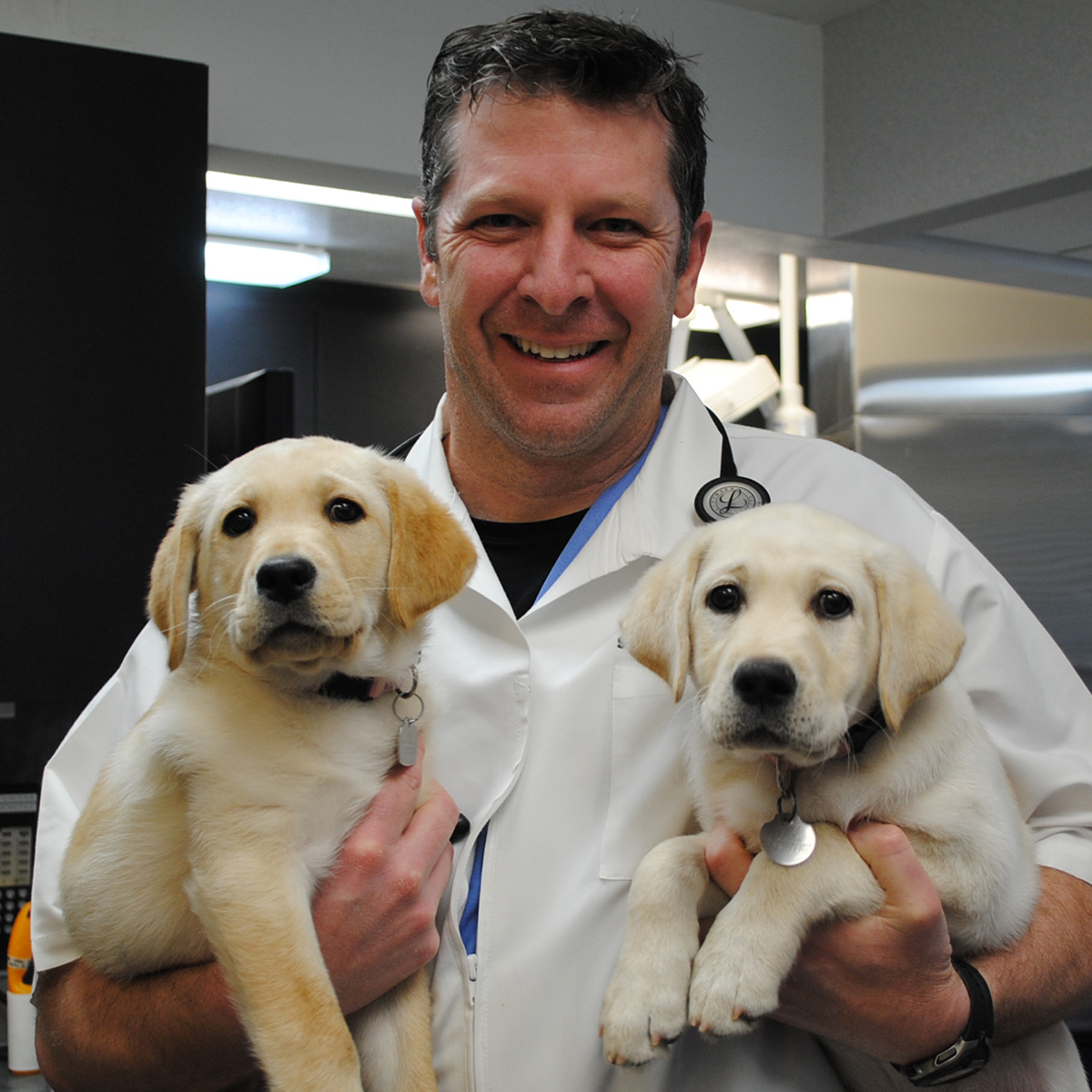How Do You Become a Veterinarian?
When traveling on an airplane, it’s not unusual for our veterinarians to hear from their seat mate, “Oh, I always wanted to be a veterinarian!” which is usually quickly followed by a show-and-tell of photos and a bevy of questions, from the complex to “Why does my dog eat his own poop?” Veterinary medicine consistently ranks among the most respected and admired professions. Pet owners and animal lovers do think highly of veterinarians, but many don’t know the incredible schooling that these animal doctors must complete.
Additionally, when asked what a veterinarian does, most people will respond with a phrase about “taking care of animals.” While that is certainly true, most are unaware of the incredible diversity of careers found in the veterinary profession. Not only do veterinarians care for our companion animals and our livestock, but they are also found doing important research that benefits both people and pets or even helping governments track and prepare for newly emerging diseases. Veterinarians are active in the military, our food inspection services, in the public health sector and even in designing new foods and medications to help animals.
So, what does it take to become a veterinarian?
First, good grades throughout high school and an undergraduate program in college are essential. Course work should be strong in math and sciences, but it is also important for the student to be well-rounded. As an example, communication courses are vital as the majority of veterinarians will need to effectively explain complex medical diseases and terminology to pet owners or ranchers and farmers.
These early years are also a great time to focus on finding a job or volunteer opportunity that gives hands-on experiences with animals. Animal shelters often accept school-age volunteers, but don’t forget about the possibilities offered by Future Farmers of America programs or the local 4-H. These days, weeks and months of working closely with animals can help a prospective veterinary student understand the challenges of animal care.
After a minimum of three years of undergraduate work, the process for applying to veterinary school can begin. Competition for the open spots is extremely fierce. There are 28 schools of veterinary medicine in the United States with four in Canada and another four located in the Caribbean. Compare that to the 134 human medical schools in the U.S.! Also, each of these universities generally only accepts about 100 students for each veterinary class, meaning that about 3000 slots are available for each new class. Again, human medical schools graduate about 20,000 new doctors each year.
Once accepted, new veterinary students will find that their school days will be very regimented and filled with an incredible amount of information. For the first two years, the focus is on the sciences. Lectures on the anatomy of various animal species, physiology, microbiology and many more subjects are the focus on the student’s days.
Then, as the students progress into their third and fourth years, all of the information they committed to memory can now be used in a practical manner as they move towards more hands-on work in the veterinary teaching hospitals and labs. We have hosted many fourth-year veterinary students who have worked with our doctors and clients as they learned the important skills of client interaction. These students have assisted with emergencies, surgeries, dental procedures and routine wellness appointments.
When graduation finally arrives, the learning and education process is not over for these brand-new animal doctors. In order to practice veterinary medicine, new graduates must pass national and state board exams. Then, even as they are learning the expertise of daily routines at their new job, continuing education (CE) is a requirement of all veterinarians. This CE helps veterinarians stay on top of a variety of technological and treatment protocol changes.
Some veterinarians continue their education, specializing in areas like dentistry, radiology or even lab animal medicine. There are almost 40 different specialty organizations and veterinarians who seek to become a specialist may add another four to six years on to their education.
As you can see, becoming a veterinarian not only takes passion and intelligence but a fair amount of sacrifice and commitment as well. The degree of Doctor of Veterinary Medicine, or Veterinariae Medicinae Doctoris at the University of Pennsylvania, is one of diversity and certainly a rewarding profession.


